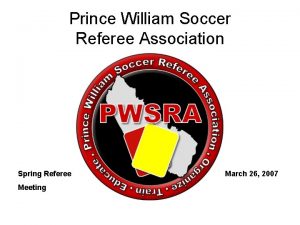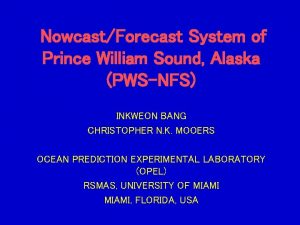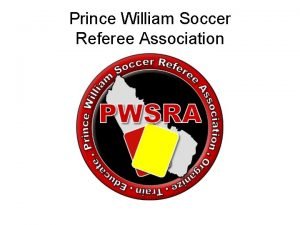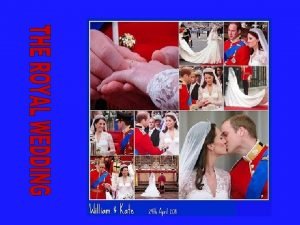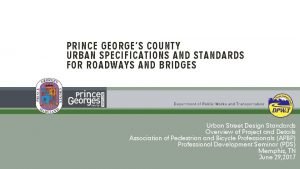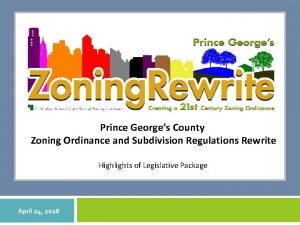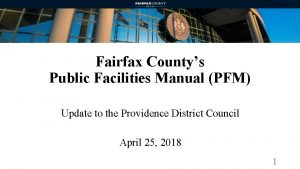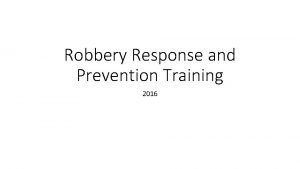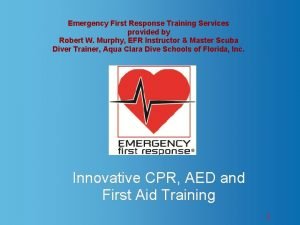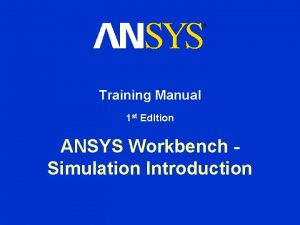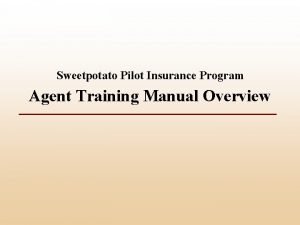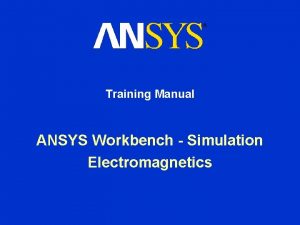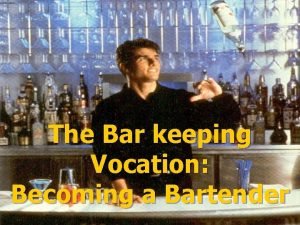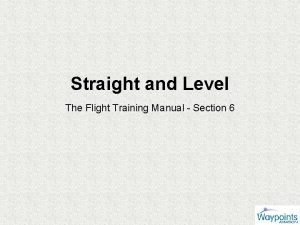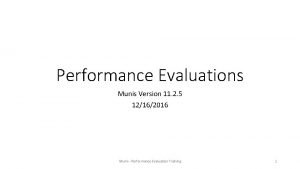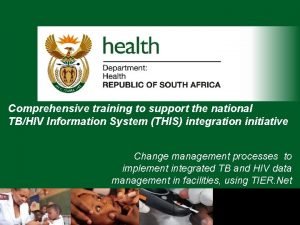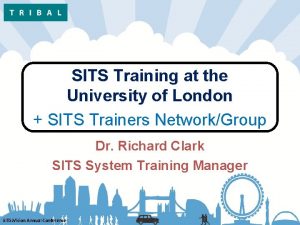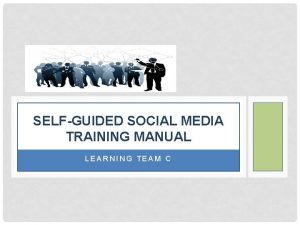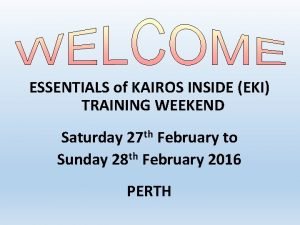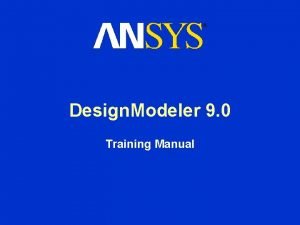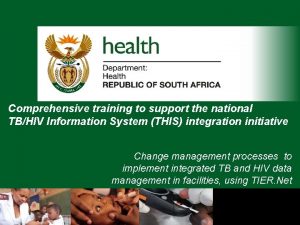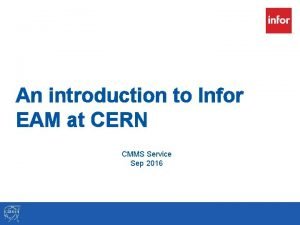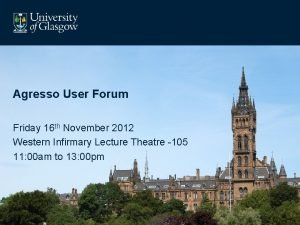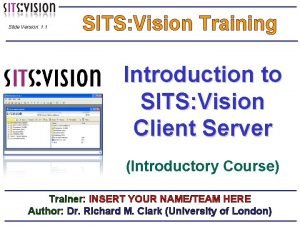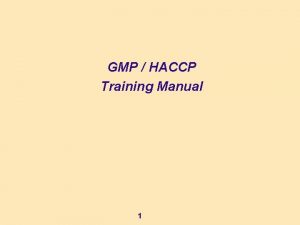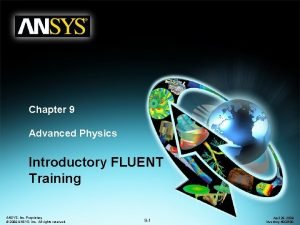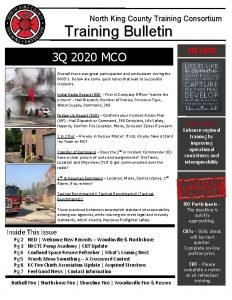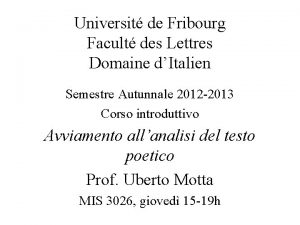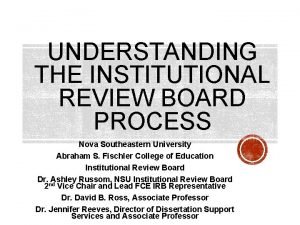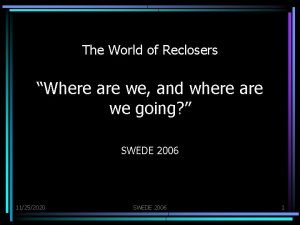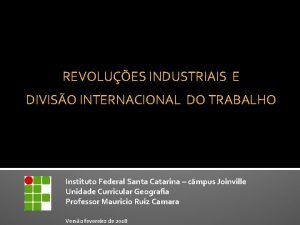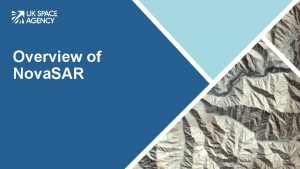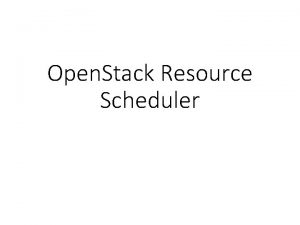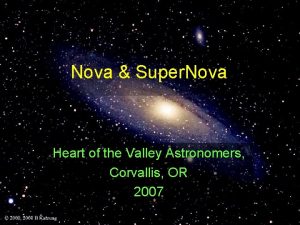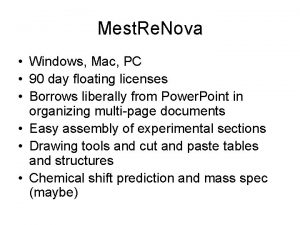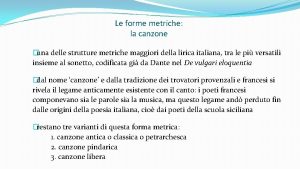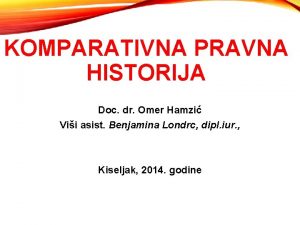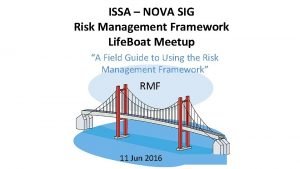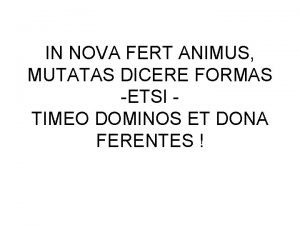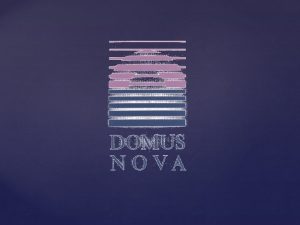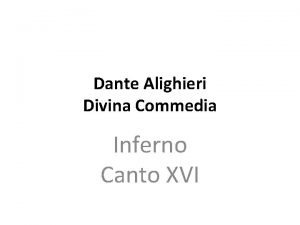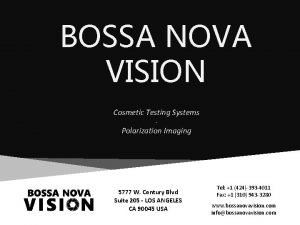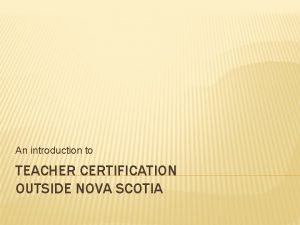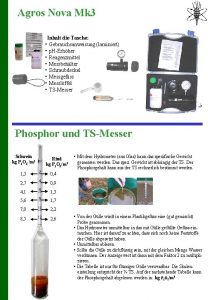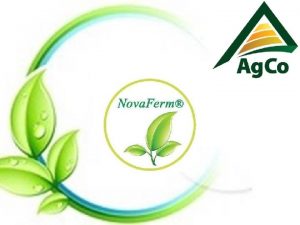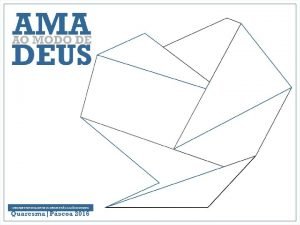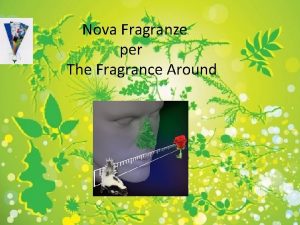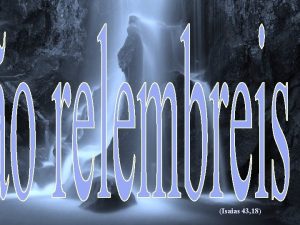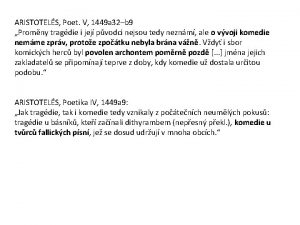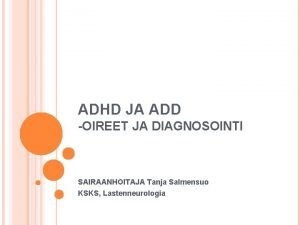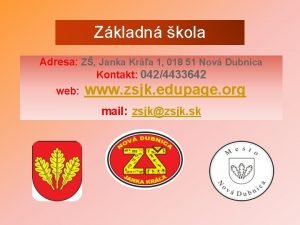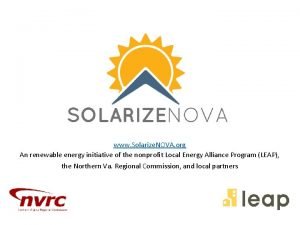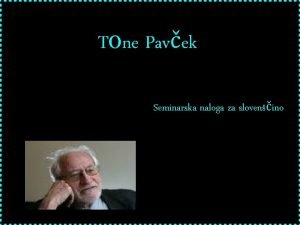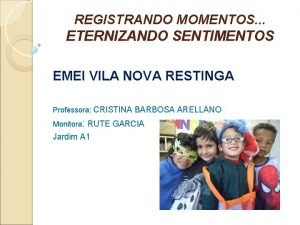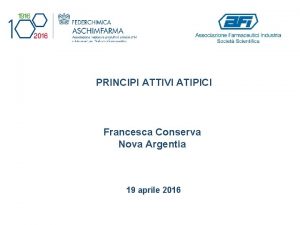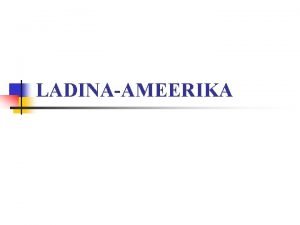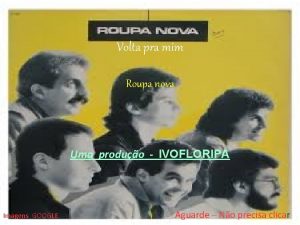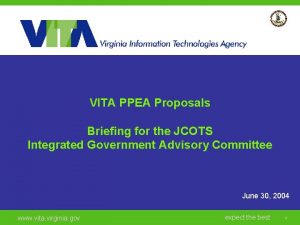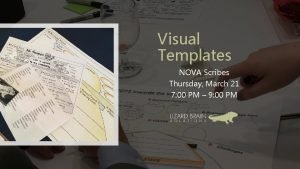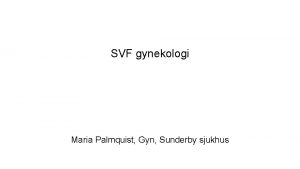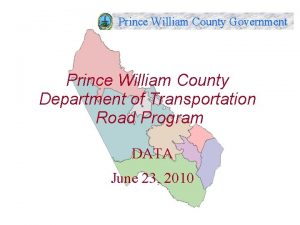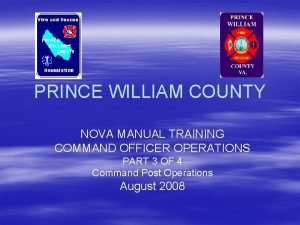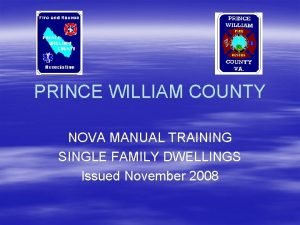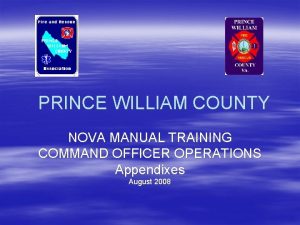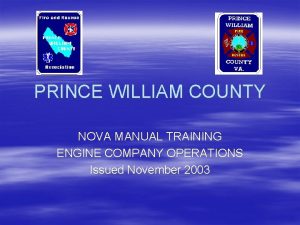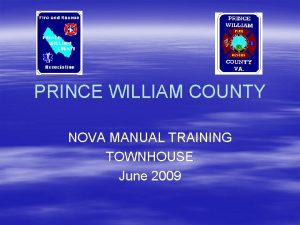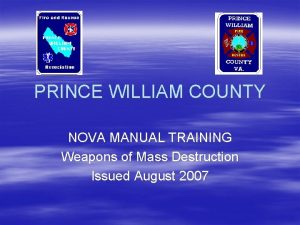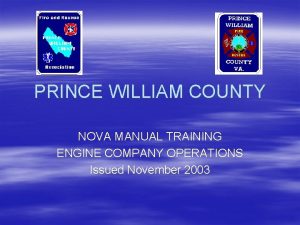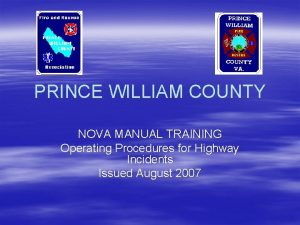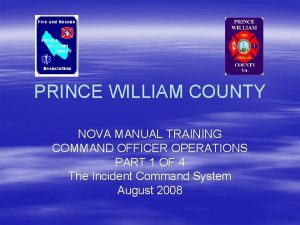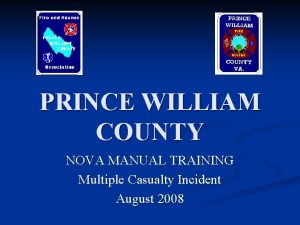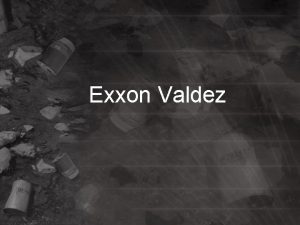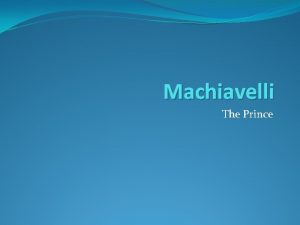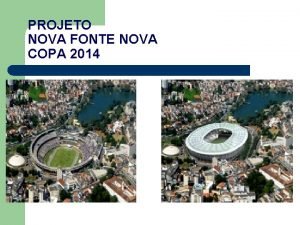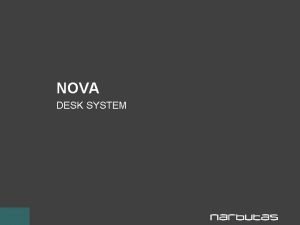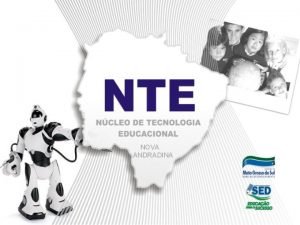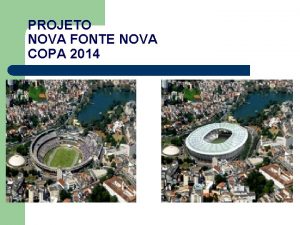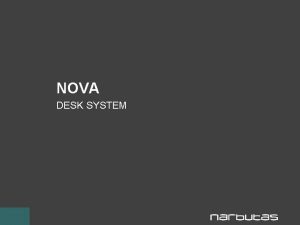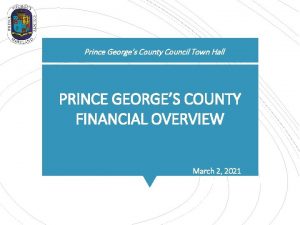PRINCE WILLIAM COUNTY NOVA MANUAL TRAINING Response to


































































































- Slides: 98

PRINCE WILLIAM COUNTY NOVA MANUAL TRAINING Response to Flammable Liquid Emergency Incidents Issued August 2007 1

Flammable Liquids Manual § This powerpoint program was developed by Battalion Chief Joel Hedelman and Captain Richard Miller of the Fairfax City Fire Department for NOVA Manual Training. § Slides pertaining to the administration and operations of the City of Fairfax Fire Department have been eliminated to meet the needs of Prince William County. 2

Objectives of the Flammable Liquids Manual § To describe those flammable liquids storage and transmission structures and transport vehicles that are prevalent in the NOVA area. § To identify the construction and fire protection features in flammable liquids storage and transmission structures with regard to protecting life and extinguishing fires. § To describe the hazards associated with these types of structures and vehicles and to recommend actions that should be taken to mitigate the incident § To reduce the loss of life and property and improve firefighter safety by establishing a standard method of operation for departments responding to flammable liquid emergency events. RGM 3

Objectives § § Explain the principle purpose of foam Define the “Enemy” Understand basic foam terminology List the various types & characteristics of foam used in the fire service today § Describe the basic guidelines for using foam § Discuss and review various application techniques RGM 4

RGM 5

What is Foam and Why Use It? § Fire-fighting foam is an aggregate of air-filled bubbles formed from aqueous solutions and is lower in density than flammable liquids. § It is used principally to form a cohesive floating blanket on flammable and combustible liquids and prevents or extinguishes fire by excluding air and cooling the fuel. § It also prevents ignition or re-ignition by suppressing formation of flammable vapors. § It has the property of adhering to surfaces, which provides a degree of exposure protection from adjacent fires, and provides post security for emergency responders. RGM 6

RGM 7

Protein Foam § Long lasting foam blanket, provides excellent burnback resistance. Slow knockdown. § Highly resistive to the effects of heat. Post fire security. § Compatible with air aspirating foam making equipment. § Suitable for use with foam compatible dry chemical extinguishing agent, not suitable for subsurface application with fixed tank systems. § Not suitable for use on polar solvents. RGM 8

Fluoroprotein Foam § Long lasting foam blanket, provides excellent burnback resistance. § Highly resistant to fuel contamination (Oleophobic) § Highly resistive to the effects of heat. Post fire security. § Compatible with air aspirating foam making equipment. RGM 9

Fluoroprotein Foam § Suitable for use with foam compatible dry chemical extinguishing agent § Suitable for subsurface application with fixed tank systems. § Not suitable for use on polar solvents. § Fluorochemical surfactant additives are combined with the protein base to increase fluidity with excellent fuel tolerance, enabling it to seal around obstructions for quicker and more effective knockdown than conventional protein foam RGM 10

RGM 11

Aqueous Film Forming Foam (AFFF) § Fluidity allows finished foam to quickly flow around obstacles, wreckage, and debris § Dry powder compatible § May be used through non- aspirating nozzles, but for optimum performance, aspirating nozzles should be used. § Fluorochemical surfactant reduces the surface tension allowing the drained solution to be supported on the surface of the hydrocarbon. § Quick drainage = poor heat resistance RGM 12

(Combustible liquids) RGM 13

Alcohol Resistive - AFFF § Extremely versatile § Good burnback resistance, knockdown, and high fuel tolerance for both hydrocarbons and alcohol fires. § Acts as regular AFFF on hydrocarbons § Combined with the synthetic detergents & fluorochemicals are Polysaccharide Polymers. RGM 14

Alcohol Resistive - AFFF § When used on polar solvents (or water miscible fuels), the Polysaccharide Polymer drains from the bubble and forms a tough membrane which separates the foam from the fuel. § This action prevents the destruction of the foam blanket. RGM 15

Alcohol Resistive – AFFF Polymeric Membrane Formation Polar Solvent Fuel RGM (Water Miscible) 16

RGM 17

Do not mix your concentrates Foam compatibility, finished foam can be mixed, but be mindful of the ¼ life of the finished foams that are being used Do not mix foam concentrates RGM 18

Foam Is Not Effective On: § Class “C” Energized Electrical Fires Danger: RGM Foam is an excellent conductor of electricity and should not be used on class “C” fires. 19

Foam Is Not Effective On: § Three Dimensional Fires v Extinguish three dimensional fires with dry chemical v Extinguish ground fires with foam RGM 20

Foam Is Not Effective On: § Pressurized gases v Propane v Vinyl Chloride v Butane v. Natural Gas RGM 21

Foam Is Not Effective On: § Combustible Metals D RGM 22

RGM 23

Foam Properties § Knockdown § Heat Resistance § Cooling § Fuel Tolerance § Vapor Suppression RGM 24

Knockdown Speed At Which Fire Is Controlled FOAM BLANKET BURNING FUEL RGM 25

Heat Resistance/Cooling Foam’s ability to withstand exposure to heat Direct flame impingement FOAM BLANKET Hot metal tank wall Cooled by water draining from bubbles! RGM BURNING FUEL (surface) 26

Fuel Tolerance Ability of foam bubbles to pass through and shed the fuel as they resurface (oleophobic) Fuel Foam bubbles re-surfacing RGM 27

Vapor Suppression Ability of the foam blanket to prohibit fuel vapors from migrating through the finished foam blanket Finished Foam Blanket Fuel Vapors Combustible vs Flammable !! Fuel Foam Bubbles Re-surfacing RGM 28

Foam Properties RGM 29

Foam Quality - Measured by § 25% Drainage Time or Quarter Life § Expansion Ratio § Fire Performance § Burn back resistance § Nozzle type required RGM 30

RGM 31

Defining the Enemy Flash Point, Vapor Pressures and Solubility Gasoline Diesel Fuel #2 Ethanol FP closed cup -45 F 165 F 55 F 0. 2 2. 3 negligible 100% Vapor Pres 8 – 15 PSI Water Solubility Negligible RGM 32

Classification of Fuels § Hydrocarbons Products Of Crude Oil Float On Water Gasoline Diesel Jet Fuel Kerosene RGM 33

Classification of Fuels § Polar Solvents Products Of Distillation, Have an Aggressive Desire to Mix With Water Ketones Esters Alcohol & Ethanol RGM 34

Blended Fuels “RFG” & Oxygenated Fuels E 10 and E 85 (Ethanol) Fuels § “Reformulated Gasoline and Oxygenated Fuels – Do they still exist? § E 10/E 85 Ethanol Fuels § Intended to reduce carbon monoxide levels RGM 36

Ethanol Blended Fuels § E 10, sometimes called gasohol, is a fuel mixture of approximately 10% ethanol and 90% gasoline that can be used in the internal combustion engines of most modern automobiles § E 85 is a mixture of 85% ethanol and 15% gasoline and other additives, and is generally the highest ethanol fuel mixture used in the United States § The E 10 requires no modification to current internal combustion motors to be used as fuel § Very limited number of E 85 gas stations in NOVA region and modifications to engines are required. § Handout from DOT RGM 37

E 85 Refueling Locations These stations are distributing E 85 § § § Navy Annex Citgo Station 801 S. Joyce St. Arlington , Bolling Air Force Base Washington , DC 20032 VA 22204 Marine Corps Base Quantico , VA 22134 Zeek’s ? 16640 Crabbs Branch Way Rockville , MD 20855 Goddard Space Flight Center Bldg 27 Soil Conservation Rd Greenbelt , MD 20771 RGM § § Quik-Mart Citgo Parole 2042 West St. Annapolis , MD 21401 Baltimore State Office Center 300 W Preston St. Baltimore , MD 21201 Tom's 2905 E Prospect Rd. York , PA 17402 H. C. Rineer & Sons 902 Strasburg Pike Strasburg , PA 17579 § What do you know about your response area? 38

What is the Difference RGM § RFG all year long § Both change the flammable characteristics of gasoline § E 10 gasoline sold year round § E 85 still not common as commuter fuel in NOVA § Vapor Pressure is higher 39

What does this mean to us? § NFPA 11 (Foam Standard) recommends using polar solvent application rates formula (. 2 gal/sq ft min @ higher %) when oxygenated additive exceeds 10 % § A single engine response is no longer set up with enough concentrate to handle small events (moving from a lower concentration application rate to much higher rate such as 6% at. 2 gal/sq ft and higher!) § Recognize the need for special assistance early in an event and call for it (modify current dispatch sequences to included sufficient resources to overwhelm the fire § I rather have them and not need them than need them and not have them…… – Show Ethanol test video RGM 40

Response Tactics for Ethanol Products § Good Tactics — New Fuel Problem § The NOVA Foam Manual recommends the tactic to deploy ARFF (Aircraft Rescue Fire Fighting) Vehicles in response to tanker truck incidents in the metropolitan region because this type of apparatus is self sufficient with agent (foam and water) at the scene. § This has truly been a stop-gap measure to attempt to control and mitigate tanker truck rollovers. RGM 41

§ Applying the NFPA 11 formula at the application rate required for Hydrocarbons, § Example: – ARFF Units carry 1, 500 - 3, 000 gallons of water. Considering an foam flow of 1, 200 to 1500 GPM in a best case scenario, would only provide enough water/foam solution for a 1. 5 to 2 minutes of application. § This is not sufficient to meet the 15 minute flow duration required by NFPA 11. Considering the higher application rate required for Ethanol and E-85, this response method starts off with insufficient resources. RGM 42

– The NOVA region receives about 65 tanker loads of Ethanol delivered to Newington and Fairfax terminals every day. Over 400 tankers leave the Fairfax Tank farm each day – We have to treat every tanker incident as if it contains a potential ethanol product until proper product identification is made RGM 43

Response to over the road incidents: § The right response for these incidents is critical for success of the operation. § The current special foam unit recommendation for foam units required to respond to a transportation incident is: § 2 ARFF Unit § 1 Industrial Foam Unit RGM 44

The Right Foam § With the change to Ethanol in the region, the recommendation is to deploy two ARFF Units, with one carrying AR-AFFF foam concentrate. And one industrial foam unit with AR-AFF foam concentrate. § This would provide two (2) units for the incident with AR-AFFF foam concentrate and one (1) foam unit with AFFF foam concentrate RGM 45

The Right Foam § Foam Task Force consisting of: 3 foam units total § One ARFF Unit with AR-AFFF – (Foam 426) § If Foam 426 is not available a second ARAFFF Industrial Unit shall be dispatched § One ARFF Unit with AFFF (Airports, and Military Airports) § One Industrial Unit with AR-AFFF (Foam 437 or Foam 403) RGM 46

Tactical Considerations: § Establishing a water supply is always a serious challenge for transportation incidents, but critical for a successful outcome. § Pre-fire planning can be difficult for tanker truck incidents. Using both ARFF and Industrial Foam Units will provide the necessary resources for these incidents. § The NOVA regional fire departments have developed water supply and foam storage strategies to control and mitigate flammable and combustible liquid over the road and bulk storage emergencies. RGM 47

Tactical Considerations: § This banking method will better protect the polymeric barrier of the foam blanket. Plunging will disturb the polymeric barrier of the foam, which allows the water content of the finished foam to mix with the polar solvent and dissolve into the product § Flammable and combustible liquid incidents involving storage tanks are more complex. Outage or space inside the tank of approximately 7’ to 8’ allows foam application by hitting the back wall of the tank, or by utilizing the inner wall to deflect the foam stream creating a swirling motion for a gentle application. RGM 48

TACTICAL ADVANTAGES OF AR-AFFF AND AFFF These foams are extremely effective at lower expansion ratios, they can be used with non air-aspirating nozzles. RGM 49

TACTICAL ADVANTAGES OF AR-AFFF and AFFF Non air-aspirating nozzles produce lower-expansion foam that contains less air and more foam solution. With more foam solution, the foam can travel in a tight stream and penetrate updrafts. RGM 50

TACTICAL ADVANTAGES OF AR-AFFF and AFFF Lower-expansion foam is much more fluid, and can extinguish fires more quickly. RGM 51

TACTICAL ADVANTAGES OF AR-AFFF and AFFF Because lower-expansion foams can be thrown much RGM farther, firefighters can work from safer distances. 52

Lessons Learned § Because of the testing done in February 2007 by IAFC and the Ethanol Emergency Response Coalition (EERC), we now have hard and fast data that AR-AFFF foam concentrates is the best choice for controlling and mitigating ethanol emergencies. § The best formula for success with incidents involving ethanol and ethanol blends is utilizing AR-AFFF, adequate resources, good pre-fire planning, and proper education of emergency responders. RGM 53

Ethanol Fire Test Results February 2007 Report § Only AR-AFFF and AR-FFFP were capable of extinguishing any of the top side fire tests. § Only Type II fires were successfully extinguished with the two AR type products. The AR-FFFP required a higher application rate to extinguish the fire. § Of the two agents that were capable of passing the extinguishment requirements, only the ARAFFF was capable of also passing the burn back resistance portion of the test. § Only the AR-AFFF was capable of passing all of the top side fire test requirements. § Only the AR-AFFF was capable of passing the RGMsprinkler test with non-aspirating sprinkler heads. 54

General Observations § Denatured ethyl alcohol fires can only be extinguished with AR type foams. § ALL OTHER TYPES OF FOAM OR WATER ADDITIVES ARE INEFFECTIVE AS THE FOAM BLANKET IS DESTROYED WHEN IT STRIKES THE FUEL SURFACE. § AR type foams must be applied to ethyl alcohol fires using gentle application techniques. § For emergency responders this will mean directing the foam stream onto a vertical surface and allowing it to run down onto the fuel. § Direct application of the foam to the fuel surface will likely be ineffective unless the fuel is ¼ inch or less in depth. RGM 55

General Observations § Gasohol fires may be extinguished using conventional AFFF and AR-AFFF but increased application rates may be necessary especially for prolonged burn back resistance. § A direct type III application with these foams onto the fuel surface may be used with gasohol. § Non-aspirating sprinkler head systems may be used with AR-AFFF for ethyl alcohol fuel fires and for gasohol fires such as in loading rack installations. All other foams proved ineffective at the application rates tested. § Use of regular fluoroprotein foam through air-aspirated sprinkler systems at standard design rates proved to be effective in gasohol (<10% ethanol) fires but not on denatured ethyl alcohol. § Note that E 10 products contain 9 – 11% ethanol § AR-AFFF proved to be the most effective and most versatile agent tested. It was the only agent that was RGMsuccessful in all fire test scenarios. 56

The Ethanol Lessons § Because of the testing done by IAFC and the Ethanol Emergency Response Coalition (EERC), we now have hard and fast data that AR-AFFF foam concentrate is the best choice for dealing with ethanol emergencies. § As stated earlier, the best formula for success in addition to a good AR-AFFF is first doing your homework by pre-fire planning as much as possible, and by educating firefighters on how to calculate the water and foam needs per NFPA 11 for tanker, rail, marine and storage tanks. RGM 57

Foam Application Methods RGM 58

Type II Application Techniques For Aboveground Storage Tank Fire Protection Systems Fixed and Semi fixed foam outlets, either subsurface or topside, designed todeliver finished foam to surface of burning liquid with restricted agitation Pre-plans of Fixed Storage facilities provide the best info for identifying type II foam systems and resource needs RGM 59

Type III Application Technique § The best method for Type III applications would be an indirect method or “banking”. This method directs the foam stream toward any structure or object that is adjacent to the burning fuel to create a “splash” or cascading foam application introducing the foam to the burning surface more gently than directly plunging the foam. This banking method will better protect the polymeric barrier of the foam blanket. (Roll-on, banking and raindrop) § Most important with Type III applications on a tanker fire — plunging or direct applications are not recommended. Plunging will disturb the polymeric barrier of the foam, which prevents the water content of the foam from mixing with the polar solvent § * It must be noted — any finished foam that plunges below the fuel surface will be consumed by the fuel. RGM 60

Type III Application Technique § When dealing with storage tanks the operation becomes quite a bit more complex. Outage — or space inside the tank — of approximately 7’ to 8’ allows the finished foam to be applied Type III by hitting the back wall of the tank, or by utilizing the inner wall to deflect the foam stream creating a swirling motion to gently apply the foam. § If low foam expansion tubes (that will not reduce the reach of the foam stream) are available, it is recommended to attach them to the nozzles for Ethanol fires, and for nonfire situations for additional foam expansion § 30 degree fog pattern in the foam tube will ensure proper expansion ration RGM 61

Application Method § The best method for ARFF attack and Type III applications for ethanol is the indirect method or “banking”. § This method directs the foam stream toward any structure or object that is adjacent to the burning fuel to create a “splash” or cascading foam application introducing the foam to the burning surface more gently than directly plunging the foam. RGM 62

RGM 64

Application Rate Application rate is defined as a measure of the quantity of foam, applied per unit of time, per unit of total area. Usually identified as GPM/FT 2 RGM 65

Application Rate Apply the recommended volume of water/foam solution for every square foot of surface area. RGM 66

. 16. 16. 16 Application Rates RGM 67

APPLICATION RATES NFPA minimum application rates for Hydrocarbons: Type II. - 0. 10 GPM/Ft 2 Type III. - 0. 16 GPM/Ft 2 Adjustment to application rate based on product RGM 68

Type I -Moeller Tube Not in use in this area. 0. 10 GPM/Ft 2 RGM 69

Type I - Foam Trough 0. 10 GPM/Ft 2 RGM 70

Type II - Foam Chamber RGM 0. 10 GPM/Ft 2 based on hydrocarbon product 71

Type II Sub-surface RGM 0. 10 GPM/Ft 2 72

Type III - Over The Top 0. 16 GPM/Ft 2 RGM 73

Williams’ Recommended Type III Application Rates For Hydrocarbon Storage Tanks § § § 0’ - 150’ - 0. 16 GPM/Ft 2 151’ - 200’ - 0. 18 GPM/Ft 2 200’ – 250’ - 0. 20 GPM/Ft 2 250’ – 300’ - 0. 22 GPM/Ft 2 300’+ - 0. 25 GPM/Ft 2 § Largest tank in the NOVA region is 210’ in diameter RGM 74

DETERMINING WATER/FOAM REQUIREMENTS Sq Ft X Application Rate = GPM Water/Foam Sol. X % Con. = GPM Foam Con. X Recommended Duration = Gallons of Foam concentrate needed on-site RGM 75

DETERMINING WATER/FOAM REQUIREMENTS Example: 150’ diameter gasoline tank fully involved 3. 1416 X 752 = 17, 671 Ft 2. 7854 X 1502 = 17, 671 Ft 2 X 0. 16 GPM/ Ft 2 = 2, 827 GPM Foam Sol X. 03 = 85 GPM Foam Con. X 65 min. = 5, 525 Gal. Con. RGM 76

Application Rate § NFPA 11 recommends a minimum 0. 16 gpm/ft 2 for type III. § Although 0. 16 is a minimum much of industry uses this application rate as a standard. § As the tank diameter increases or product type changes to polar solvents, consider increasing the application rate. RGM 77

Application Density RGM 78

Application Density: Defined as a measure of the quantity of foam applied per unit of time per unit of area in which it lands. Example: 150’ diameter tank The foam lands in an area of 4, 000 ft 2 The application density would be 0. 70 gpm/ ft 2. RGM 79

Application Density In the past the “Surround and Drown” methodology was the tactic for many failed tank fires. Mainly due to the inability to deliver enough finished foam to a given area to establish “Flame Collapse. ” RGM 80

Application Density “Mass Stream” Technology assures maximum flame collapse by focusing the majority of the finished foam in a concentrated area. RGM 81

RGM 82

NFPA 11 “Tests have shown that foam may travel effectively across at least 100 feet (30 m) of burning liquid surface” “Sometimes” RGM 83

Footprint Concepts When considering the variables for a foam attack on a storage tank fire, several factors are often overlooked in industry: § A proven technology that has successfully extinguished a tank fire. § Application rates that are applicable to the tank involved. § High application densities in the landing zone § The distance a foam blanket has to travel across a burning fuel. RGM 85

SQ. FT. = 17, 671 RECOMMENDED MINIMUM APPLICATION RATE = 0. 16 ACTUAL APPLICATION RATE = 0. 17 FLOW RATE = 3, 000 GPM RGM 86

Minimum Equipment Requirements Calculations for 200’ x 40’ Storage Tank 6, 000’ - 5” Hose Total Surface Area = 31, 415 ft² 600’ - 3” Hose Total Tank Capacity = 9, 399, 368 Gallons 600’ - 1 3/4” Hose Total Product Per Foot = 234, 984 Gallons 3 ea. - 12” 4 - 5” Discharge Manifolds w/Valves Total Value of Product = $7, 049, 526. 00 3 ea. - 5”x 5” Jumbo Wye Burn Off Rate expected = 1. 5 feet per hour 3 ea. - 2. 0”JP 60 Jet Ratio Controller *Dollar Loss per hour = $ 264, 357. 00 39 ea. 305 gal. Foam Concentrate Totes (8 Based on $. 75 per gallon) Minimum Personnel Required Foam Requirement Calculations 1 - Lead Fire Fighter Total Solution Required = 6, 000 GPM 6 - Fire Fighter/Technician Application Rate =. 19 gal / ft² 6 - Support Personnel Foam Concentrate Consumed = 180 GPM @ 3% *Total Foam Concentrate Required = 11, 700 gallons Cost per gallon = $ 16. 50 Total Foam Cost = (est. ) = $193, 050 (* Based on NFPA 11) RGM 87

Foam Logistics Facts § Foam Concentrate = 9. 0 lbs. /gallons § Foam Drum = 55 gal, 520 lbs. /drum § Foam Tote = 265 gal, 2, 745 lbs/tote RGM 88

RGM 89

Application Rates Calculated § § § Identify Product Estimate square footage of hazard area Choose Appropriate Application Rate x Area = GPM of Foam Solution GPM x % Used = Concentrate GPM § Concentrate GPM x Time = Total Concentrate § Spills - 15 Minutes Flow Time With Knowledge of Foam Nozzles, Flow Rates Will Give a Measurement of What Nozzles or Combination of Nozzles Will Be RGM 90 Required. . .

Application Rates Calculated Determine Area of Hazard = Application Rate = Rate x Area = 3000 sq. ft 75’ . 16 GPM 480 GPM of Solution 40’ 480 GPM x 3% Used = 14. 4 GPM Con. 14. 4 x 15 mins = 216 gals needed Gasoline Spill NFPA Says We Can Use. 1 Application Rate for Film Forming Foams. . Calculate for That Rate ? ? RGM 91

Application Rates Calculated After Size up: Marshal Your Resources Before You Attempt To Extinguish The Fire. Any applications of foam prior to having the required foam concentrate, water and hardware may serve to protect life or exposures, but can Not be counted as part of the application when resources are gathered. RGM 92

Post Fire Security Preservation of Foam Blanket - Degradation Why? § § § Weather - Wind & Rain Heat Fire Product Itself Time Firefighters Ooops ! Utilize vapor detectors to validate foam blanket integrity Polymeric membrane on AR-AFFF is not self healing RGM 93

First Arriving Engine Actions § Engine officer perform initial size-up, identify obvious life safety concerns and give preliminary “on-scene” radio report to include water supply needs and/or initial staging area. § Make contact with facility representatives, determine current situation and any actions taken prior to FD arrival. § Establish action plan based on life safety priorities providing a situation report and command statement via the radio. § If rescue measures not required, recon is required. 2 in/2 out applies! § Note visual indicators of hazards such as smoke, vapor clouds, active leaks or odors and product type. § Active leak? Flow rate? Leak controllable? § Quantity spilled? Surface area of spill? Potential ignition sources? § Spill or fire contained? Where is spill migrating to? § What are the primary and secondary exposures? § Is the perimeter secure? § Report findings to IC, suggest operational mode and hot zone perimeters. RGM 94

First Arriving Battalion Chief § Obtain situation report from initial IC or company officer. § Assume command, working from a strategic location. § Assemble essential staff and facility reps to support unified command. (Stake holders notifications – VA DEQ, Water Control Board, State/Local Police, State Highway Department, Transport Carrier Co. , etc. ) § Key role for first arriving BC is to perform risk assessment for FD personnel, review life safety issues and potential exposures. § IS THIS GOING TO BE A CAMPAIGN EVENT? § Based on above info, consider additional and/or specialized resource needs early. (tankers, foam units, foam supplies, water supplies needs, EMS and REHAB support) § Identify and vocalize current mode of operation, offensive, defensive, non-intervention. § Non-intervention – isolating the area until the risk of intervention in reduced to an acceptable level. This mode may be used when assembling resources to commence an offensive attack. § Incident scene and CP security are critical § Develop IAP for a multi operational periods RGM 95

NOVA Flammable Liquids Manual Guide Sheet Review Located in the back of the manual RGM 105

RGM 106

RGM 107

RGM 108

RGM 109

RGM 110
 Prince william county specialty programs
Prince william county specialty programs Prince william county police report online
Prince william county police report online Prince william county soccer
Prince william county soccer Ndbc prince william sound
Ndbc prince william sound Prince william soccer club
Prince william soccer club William arthur philip
William arthur philip Prince george's county standard details
Prince george's county standard details Pg county zoning ordinance
Pg county zoning ordinance Prince edward county planning department
Prince edward county planning department Natural and forced response
Natural and forced response First order system transfer function
First order system transfer function Primary immune response and secondary immune response
Primary immune response and secondary immune response Fairfax pfm
Fairfax pfm Hennepin county infectious disease manual
Hennepin county infectious disease manual Fairfax county public facilities manual
Fairfax county public facilities manual Armed robbery response training
Armed robbery response training Examples of pivotal response training
Examples of pivotal response training Ccrt
Ccrt Emergency response training services
Emergency response training services Manual ansys
Manual ansys Which is the largest country in the world
Which is the largest country in the world Insurance agent training manual
Insurance agent training manual Altar ministry training
Altar ministry training Ansys workbench manual
Ansys workbench manual Bartender training manual doc
Bartender training manual doc How to maintain straight and level flight
How to maintain straight and level flight Kde munis guides
Kde munis guides Tier.net training manual
Tier.net training manual Pepperball hotshot
Pepperball hotshot Sits training
Sits training Media training manuale
Media training manuale Kairos talk outlines
Kairos talk outlines Training manual design
Training manual design Tier.net training manual
Tier.net training manual Cern eam
Cern eam Agresso instructions
Agresso instructions Sits vision
Sits vision Haccp manual
Haccp manual Financial coaching training manual
Financial coaching training manual Ansys training manual
Ansys training manual Nkctk.com
Nkctk.com Nova dual enrollment
Nova dual enrollment Se la mia vita da l'aspro tormento metafora
Se la mia vita da l'aspro tormento metafora Irb manager nova
Irb manager nova Viper st recloser
Viper st recloser St elizabeth benefits
St elizabeth benefits Sindrome de vira lata
Sindrome de vira lata Lmc nova
Lmc nova Nova objektivnost
Nova objektivnost Nova dobrudjanska tribuna bg
Nova dobrudjanska tribuna bg Nova sar
Nova sar Nova crisis intervention model
Nova crisis intervention model Nova scheduler
Nova scheduler Super nova
Super nova Finlandia rahoitus kokemuksia
Finlandia rahoitus kokemuksia Nova pisarija
Nova pisarija Mest re nova
Mest re nova Strutture metriche
Strutture metriche Nova feudalizacija
Nova feudalizacija Issa nova
Issa nova In nova fert animus
In nova fert animus Nova chat communication device
Nova chat communication device [email protected]
[email protected] Nova 52
Nova 52 Doma teletekst
Doma teletekst Sodomiti divina commedia
Sodomiti divina commedia Amber nova unconscious
Amber nova unconscious Bossa nova vision
Bossa nova vision Teacher certification nova scotia
Teacher certification nova scotia Agros nova
Agros nova Nova ferm multi
Nova ferm multi Unidade pastoral nova oeiras
Unidade pastoral nova oeiras Nova benefits
Nova benefits Nova fragranze
Nova fragranze Eis que faço nova todas as coisas isaias
Eis que faço nova todas as coisas isaias Elizabeth bishop poses interesting questions
Elizabeth bishop poses interesting questions I 3 stadi dell'amore nella vita nuova
I 3 stadi dell'amore nella vita nuova Nová attická komedie
Nová attická komedie Add oireet
Add oireet Základná škola janka kráľa nová dubnica
Základná škola janka kráľa nová dubnica Solarize nova
Solarize nova Eduarte mbo amersfoort
Eduarte mbo amersfoort Tone pavček nova faca
Tone pavček nova faca Nova payee services
Nova payee services Emei vila nova
Emei vila nova Fucsina fenica nova argentia
Fucsina fenica nova argentia Nova evangelizacija
Nova evangelizacija čovjek otkriva nova oruđa i tehnike
čovjek otkriva nova oruđa i tehnike Um clima de sonho
Um clima de sonho Ladina ameerika rütmipill
Ladina ameerika rütmipill A boa nova proclamai com alegria
A boa nova proclamai com alegria Nova chemical red deer
Nova chemical red deer Arte nova características
Arte nova características Roupa nova eu te amo e vou gritar
Roupa nova eu te amo e vou gritar Nova vita subtitles
Nova vita subtitles Nova scribes
Nova scribes Poema amarelinha de sérgio capparelli
Poema amarelinha de sérgio capparelli Endometriebiopsi pipelle
Endometriebiopsi pipelle Super nova
Super nova


